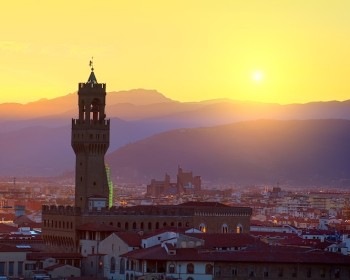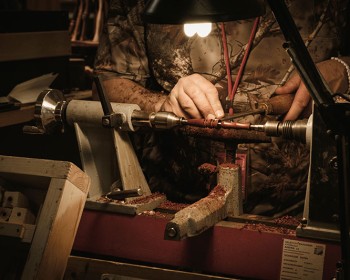Known among Italians as Torre Pendente di Pisa, this piece of architecture is significally different from most medieval architecture. The Leaning Tower of Pisa is located on the city’s main square, Piazza del Duomo.
This square is also known as Piazza dei Miracoli, “Miracles’ Square”, a name given by Italian writer Gabriele D’Annunzio. In 1987 the whole square became one of the many Italian UNESCO World Heritage sites! The leaning tower is the third oldest building built in the square, after the wonderful Cathedral and its Baptistry.
With its many columns and archs, this tower boasts an advanced knowledge of weight and load characteristics, showing the Italian architectures’ expertise. Why is the tower leaning then? What the architect didn’t account for was the base of the tower, which was built on a dense section of clay…
The Early Years of the Leaning Tower of Pisa
The construction of the Tower began in 1173. Originally designed to be a bell tower, it stood upright for over 5 years, but when the third floorwas completed in 1178 it began to lean. Italians were shocked by the event, as the tower began to lean ever so slightly.
The thing is the foundation of the tower, which is only 3-meter deep, was built on a dense clay mixture. This mix impacted the soil and furthermore the clay was not strong enough to hold the tower upright. As a result the weight of the tower began to diffuse downward until it had found the weakest point.
Due to this problem, construction works stopped for 100 years. The government decided to focus on its war with Genoa and hope that the soil would settle in the meantime.
Mistake after mistake!
After 100 years, engineer Giovanni di Simone stepped forward and started to add more floors to the tower. He tried to compensate for the original lean by making one side of the upper floors taller than the other. This only caused the tower to lean over even more…
Unconcerned by the leaning, the tower was added a 7th floor in the second part of the 14th century, as well as a bell tower, and then the tower was left on its own until the 19th century.
In 1838 architect Alessandro Della Gherardesca, dug a pathway at the base of the tower to allow people to admire the intricately crafted base. This caused the tower to lean even more, probably due to the digging of its base.
Tower survives World War II
World War II caused destruction all over the World. The leaning tower of Pisa, however, was very very lucky.
In fact when American soldiers invaded Pisa, they were ordered to destroy all buildings as to prevent enemy snipers to find suitable places to hide. There were no exceptions to this rule, and many buildings were blown up everyday, as the US forces advanced over the Italian countryside. However a retreat took place shortly after the arrival of the Americans, making unnecessary to destroy the Leaning Tower of Pisa!
And it is still standing!
Twenty years after the end of the war Italy asked help to avoid the Leaning Tower from toppling. They didn’t want the tower to lose its leaning though, because it is now the symbol of the city, a landmark loved by tourists from all over the world. As a temporary measure engineers and architects installed a leaden counterweight of 800 tonnes.











